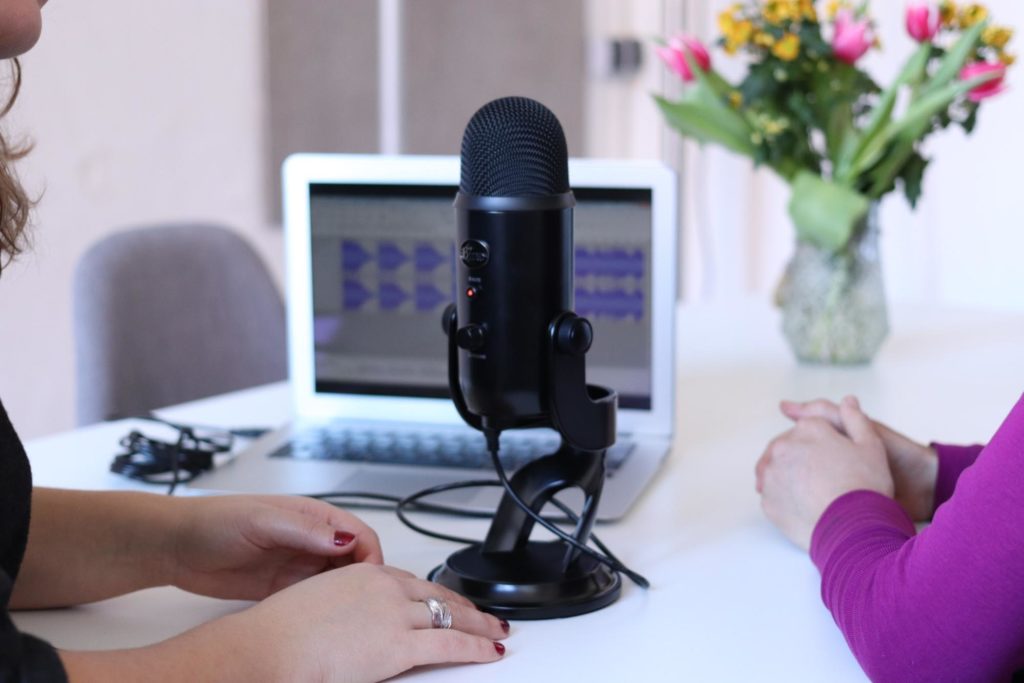
A content creation strategy is a major part of any modern marketing plan. You need to be sharing valuable, useful information with your audience, but you don’t want to put all your eggs in one basket. There are a lot of content types out there, ranging from the written word to audio to still images to video. And they all have a place in your overall marketing plan.
Here is a list of 10 of the best performing types of content for 2020. Use them all, or pick and choose the ones that you think will be best for your industry and audience.
#1 Blogs

No surprise here. Blogs are still the backbone of the content marketing world. They’re easy to produce and provide great value to the user — as long as they’re well-written and researched.
Blogs result in as many as 97% more inbound links to your website, and 434% more indexed pages online compared to sites without blogs.
And they get results. B2B marketers say that a good blogging strategy can get them 67% more leads. Just make sure your blog posts are skimmable. 43% of people admit that they skim, rather than read, blog posts online. Bulleted lists, lots of subheadings, and block quotes are all helpful to make your content skimmable.
#2 Video
Video has been growing faster than any other medium on the internet. In fact, Cisco anticipates that 82% of web traffic will be video by 2021.
People love it, and search engines love it too. Landing pages that contain video content have been shown to improve conversion rates by up to 80%. One study showed that video can increase organic traffic by as much as 157%. And it can increase the time users spend on your website by up to 105%, helping your SEO even more.
Add video to your social media feeds, and go live on Facebook and Instagram. Try your hand at Tiktok if you are trying to reach a younger audience. And you can add video to your company website, or set up a YouTube channel. Just make sure your video is optimized for mobile, because 75% of video is watched on-the-go.
#3 Infographics

People want information, and they want it in a hurry. That’s what makes infographics so popular. Easily digestible, infographics are among the most shared content on the internet. Visuals that accompany text have been proven to improve learning and retention by as much as 400%. And 84% of content marketers who have used infographics said they found them effective.
When making your own infographics, make sure to embed your logo somewhere within the image. People like to “borrow” infographics to illustrate their own blogs, and you want to make sure you’re getting the credit.
#4 Case Studies
Unlike blogs and ebooks that are usually intended to be educational, a case study gives you a chance to really toot your own horn. A case study lets you explain how you and your business helped real clients get real results.
People are heavily reliant on social proof — evidence that other people are using your product. As many as 92% of people read at least one review before making a purchase. Case studies give you the chance to essentially write your own review for your product, backed up by real data. Bonus if the company you worked with is a major name.
#5 e-books
Marketers have been using ebooks as lead magnets for years. By offering a free resource for the price of an email address, you’re able to build up your email list and increase your audience.
The only problem with ebooks is that there are so many of them these days, and the majority of them are meh. They’re less a “book” and more a “glorified blog post.” If you expect people to give you access to their email inbox, you need to provide a great ebook. A mediocre product will damage that new relationship and get a very quick unsubscribe.
#6 White Papers

The difference between white papers and blog posts can be a bit confusing. A white paper is a formal, authoritative, fact-based document meant to break down a complex issue. They are more academic than the average blog post, and often take much longer to write.
White papers are popular because unlike some blog posts, they contain no fluff. As many as 76% of B2B buyers say they’ll share info about themselves for white papers. They’re less entertaining to read, but they’re worth the time investment for the important industry information they can contain.
#7 Webinars
Webinars combine some of the best qualities of several different content types. They’re video, which we know people love. They’re informative, like the best blog posts and ebooks. And they get great results. An estimated 20 – 40% of webinar viewers become qualified leads, and 2 – 5% go on to make a purchase. If you get 100 viewers, that could be as many as 5 new customers!
If you plan to use your webinar to pitch your product or service, make sure to wait until the end. Starting with your pitch will turn off your viewers and they won’t stay for the content. And they won’t come back for your webinars in the future.
#8 User-Generated Content
Remember what I said about social proof? User-generated content (UGC) will turn your social proof dial up to 11. UGC can lead to as much as 90% more time spent on your website and a 50% increase in engagement. Plus, if it’s included along the customer purchase path, it can increase conversions by 10%!
Types of UGC include social media posts using or tagging your product, reviews, blog comments, polls, challenges, and even fan art. Look at brands like Chipotle, Starbucks, and Adobe for some examples of great UGC.
#9 Checklists
Checklists are serious business. They’re used by hospitals, airlines, and nuclear facilities to ensure protocols are followed and no details are overlooked.
The same reasoning makes them a popular form of content marketing. Checklists are short, actionable, and useful. Any multi-step process can benefit from a well-thought-out checklist. Plus, they’re super sharable.
#10 Podcasts

Podcasting didn’t appear in its current form until the early aughts. And it took a while for the medium to explode into what it is today. But now, we’re officially in the boom. There are currently over 30 million podcast episodes — and about 30% of those were uploaded after June of 2018!
Podcast listeners tend to be high performers, listening regularly to increase their industry or general knowledge while they commute, exercise, or do household chores. Over 50% of Americans have reported listening to a podcast, and 32% listen every month. And regular podcast listeners are 45% more likely to earn over $250,000 annually.
Now What?
You know what’s so great about having a list of high-performing types of content?
You can repurpose one creation into several different pieces of content. Did you write a great blog post that performed well? Film a 3-minute video breaking down your main bullet points and upload it to IGTV. Make an infographic illustrating the stats and highlights. Use it as a chapter in your ebook.
Do the majority of the work once, and then repurpose that content into 3 or 4 different media. Work smarter, not harder!





